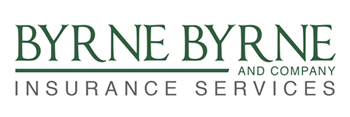Real Health Care Reform
 Holly Parsons
Holly Parsons
VP Marketing & Business Development
The Wilson Agency
We spend so much time worrying about how heath care reform will affect our business, which provisions apply and when, how much it will cost, and on and on, that I wanted to take a moment and write about what real health care reform is all about.
I recently attended a business luncheon where the keynote speaker was the CEO of a large regional hospital. At one point he asked the audience to hold up their hands if they could answer in the affirmative all of the following points:
- Exercise at least 20 minutes three times per week
- Don’t smoke
- Eat multiple portions of fruits and vegetables
- Wear seatbelts in a car
- Are at a normal Body Mass Index (BMI)
Setting aside genetics, people who practice these behaviors will generally use less health care. Less health care usage will lead to lower health insurance premiums, among other positive benefits. Unfortunately, only about 30 percent of us could admit that we practice these elements of healthy behavior. As sad as this percentage is, the speaker informed us that it’s actually much better than the national average of only three percent.
But, consistently practicing healthy behaviors can be challenging, especially in our culture. Exercising takes time, sometimes money and knowledge of the best methods and techniques. Quitting smoking is one of the most difficult things a person can do, or so I’ve heard. Very few of us get enough fruits and vegetables. If you ever eat out, you can see this in our culture through abundant fast food options, limited offerings of vegetables, and plates filled primarily with white starch or cholesterol-laden meat. All of this leads to a BMI that is less than optimal.
If we want our health insurance costs to be lower, if we want to pay less at the doctor’s office, if we want to keep the government out of our business decisions, if we want to stop subsidizing other people’s health care, then we must begin the process ourselves. Address your own unhealthy habits. If you already have healthy habits, encourage others to do the same. Turn off the TV and take a walk after dinner. Learn a recipe that incorporates vegetables. Educate yourself about weight loss or exercise. Find restaurants that provide a good selection of healthy alternatives to high starch, high fat, and high sugared foods. Demand that healthier food be served at conferences and business meetings. By all means, stop smoking.
Change can be hard. For some people, it can be overwhelming to alter habits that have developed over a lifetime or longer and therefore they never try, or quit soon after they start. But, start we must. And continue to start, over and over until we experience the progress we need to see: lower blood pressure, normal BMIs, less medication, fewer doctor visits and sick days.
The real health care reform isn’t going to be found through Congress, your health plan or your doctor. Real health care reform begins and ends with you. What will you do today to start?


 As the complexities of the Patient Protection and Affordable Care Act (PPACA) continue to challenge business owners and HR professionals, UBA continues to lead the industry by sharing proprietary research and analysis, often utilized by journalists and media outlets looking to help employers and consumers navigate the increasingly complex world of insurance benefits.
As the complexities of the Patient Protection and Affordable Care Act (PPACA) continue to challenge business owners and HR professionals, UBA continues to lead the industry by sharing proprietary research and analysis, often utilized by journalists and media outlets looking to help employers and consumers navigate the increasingly complex world of insurance benefits.
 Thomas Jefferson said it best: “Never put off tomorrow what you can do today.” And when it comes to the Patient Protection and Affordable Care Act, this lesson couldn’t ring more true. It’s easy to keep pushing compliance off to a more convenient time, but there are requirements that take effect later this year which demand preparation. The recent PPACA delays, while helpful in some ways, have erroneously caused many to think they can take a sigh of relief for a year.
Thomas Jefferson said it best: “Never put off tomorrow what you can do today.” And when it comes to the Patient Protection and Affordable Care Act, this lesson couldn’t ring more true. It’s easy to keep pushing compliance off to a more convenient time, but there are requirements that take effect later this year which demand preparation. The recent PPACA delays, while helpful in some ways, have erroneously caused many to think they can take a sigh of relief for a year.


.jpg) On July 3rd, immediately following the announcement of the employer mandate delay, we
On July 3rd, immediately following the announcement of the employer mandate delay, we 
 By Holly Parsons
By Holly Parsons
